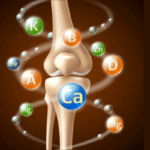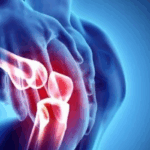
Good posture is more than just standing or sitting upright—it plays a vital role in your overall health, particularly when it comes to your joints. The alignment of your body influences how your joints function, and poor posture can have a lasting impact, leading to pain, discomfort, and even long-term musculoskeletal problems. The spine, hips, knees, and shoulders all rely on proper alignment for optimal function, and improper posture can stress these joints, causing inflammation, degeneration, and discomfort.
Dr. Ashish Suryawanshi, a highly respected orthopedic doctor in Pune, emphasizes the importance of maintaining correct posture to preserve joint health. His clinics in Nigdi and Thergaon offer expert consultation and treatment for patients suffering from joint issues related to poor posture. In this blog, we will explore the relationship between posture and joint health and provide simple tips to improve your alignment for better joint health.
Understanding the Connection Between Posture and Joint Health
The way you stand, sit, or move can impact the alignment of your spine, hips, knees, and other joints. When your posture is misaligned, it places unnecessary stress on your muscles, ligaments, and joints. This may result in various joint issues, such as:
- Joint Pain: Misalignment often causes uneven weight distribution across your joints, leading to pain in areas such as the knees, hips, lower back, and shoulders. Over time, this can cause wear and tear on the cartilage, resulting in conditions like osteoarthritis.
- Muscle Imbalance: Poor posture often leads to muscle imbalances, where some muscles become overactive while others are underactive. This imbalance can affect joint stability, leading to increased stress on certain joints and making them more susceptible to injury.
- Reduced Mobility: Improper alignment can restrict your range of motion, making it difficult to perform everyday activities. For example, slouching can lead to stiffness in the shoulders and back, reducing your ability to move freely.
- Chronic Degeneration: Long-term poor posture can contribute to the gradual degeneration of the joints, leading to chronic conditions such as osteoarthritis, tendonitis, and spinal disc issues. This can result in permanent damage to the joints if not addressed.
The Spine’s Role in Maintaining Joint Health
The spine plays a central role in maintaining overall body alignment. When the spine is correctly aligned, other joints in the body, like the hips, knees, and ankles, are also better aligned, which helps reduce strain. Misalignments in the spine, such as excessive curvature, slumping, or leaning forward, can lead to issues with other joints, contributing to discomfort and pain. Dr. Ashish Suryawanshi recommends posture correction as one of the most effective ways to reduce joint strain and improve spinal health.
Simple Tips for Better Posture and Joint Health
Maintaining good posture doesn’t require drastic changes, but making small adjustments to your daily habits can help you improve alignment and reduce the risk of joint problems. Here are some practical tips to improve your posture and protect your joints:
1. Stand Tall
Good posture begins with how you stand. To achieve this:
- Stand with your feet hip-width apart.
- Activate your core muscles and keep your knees slightly bent.
- Maintain your shoulders back, avoiding a forward round and slouching posture.
- Picture a string lifting you from the top of your head, helping you stay upright.
2. Sit Properly
When sitting for long periods, it’s important to maintain proper alignment to avoid joint strain. Here’s how:
- Keep your back straight and your shoulders relaxed while sitting.
- Place your feet flat on the floor, ensuring your knees are at a 90-degree angle.
- Try using a lumbar support cushion to help preserve the natural curve of your spine.
- Avoid crossing your legs, as this can cause an imbalance in the pelvis and lower back.
3. Practice Ergonomics
For those who work at a desk for extended periods, ergonomic adjustments are essential for joint health. Make sure your workstation is arranged to encourage proper posture. Position your computer monitor at eye level to avoid straining your neck.
- Position your keyboard and mouse at a comfortable height so that your elbows remain at a 90-degree angle.
- Make sure to take frequent breaks to stand up and stretch, which can help alleviate stiffness and muscle tension.
4. Strengthen Core Muscles
Having a strong core is essential for supporting proper posture and avoiding joint strain. Core exercises such as planks, bridges, and leg raises can help improve spinal alignment and provide support for the hips and lower back.
5. Stay Active
Regular physical activity is essential for joint health. Activities such as walking, swimming, yoga, and Pilates can enhance posture by boosting flexibility, balance, and muscle strength. It’s important to find activities that you enjoy to stay consistent with your routine.
6. Use Supportive Footwear
Choosing the right shoes can greatly impact your posture and joint health. Choose shoes with proper arch support and cushioning to reduce impact on your joints. Avoid wearing high heels for extended periods, as they can throw off your alignment and cause strain on your knees, hips, and lower back.
7. Mind Your Sleep Posture
The way you sleep also affects your posture and joint health. Aim to sleep on your back or side, as these positions promote better spinal alignment. Use a supportive pillow that keeps your neck in a neutral position, and avoid sleeping on your stomach, as this can strain your neck and back.
When to Seek Professional Help
If you experience persistent joint pain, discomfort, or stiffness despite making posture improvements, it may be time to consult a professional. Dr. Ashish Suryawanshi, an experienced orthopedic doctor in Pune, provides expert care for individuals dealing with joint issues caused by poor posture. With clinics in Nigdi and Thergaon, Dr. Suryawanshi can assess your condition, provide personalized treatment plans, and guide you on effective posture correction techniques to enhance your joint health.
Summary
Posture plays a crucial role in joint health, with poor alignment leading to pain, discomfort, and long-term degeneration. By practicing proper posture, strengthening core muscles, staying active, and using ergonomic adjustments in daily activities, you can reduce the strain on your joints and maintain their health. For those experiencing joint issues, consulting with a trusted orthopedic doctor like Dr. Ashish Suryawanshi can help address the underlying causes of joint pain and improve quality of life. His clinics in Nigdi and Thergaon, Pune, are equipped with the latest treatment options to ensure that your joints stay healthy and well-aligned.




